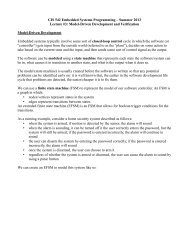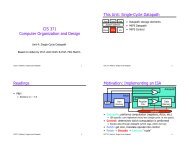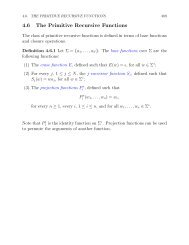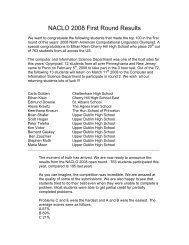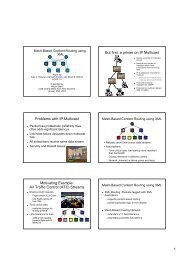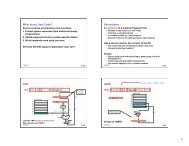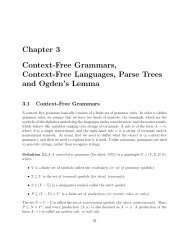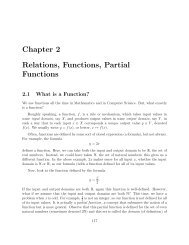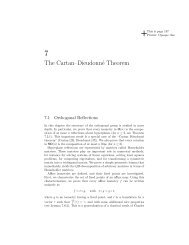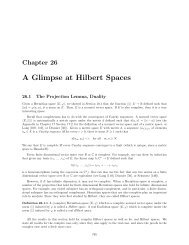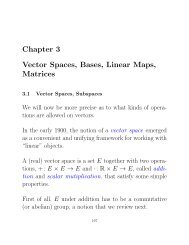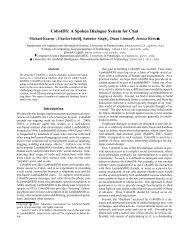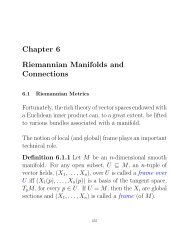Chapter 7 Assembly Language - Computer & Information Science
Chapter 7 Assembly Language - Computer & Information Science
Chapter 7 Assembly Language - Computer & Information Science
Create successful ePaper yourself
Turn your PDF publications into a flip-book with our unique Google optimized e-Paper software.
Using Multiple Object Files<br />
An object file is not necessarily a complete program<br />
• System-provided library routines<br />
• Code blocks written by multiple developers<br />
For LC-3 simulator<br />
• Load multiple object files into memory, then start executing<br />
at a desired address<br />
• System routines, such as keyboard input, are loaded with OS<br />
!OS code starts at 0x0200<br />
!User code should be loaded between x3000 and xFDFF<br />
• Each object file includes a starting address<br />
• Be careful not to load overlapping object files<br />
CSE 240<br />
7-25<br />
Linking and Loading<br />
Loading is the process of copying an executable image<br />
into memory<br />
• More sophisticated loaders are able to relocate images to fit<br />
into available memory<br />
• Must readjust branch targets, load/store addresses<br />
Linking is the process of resolving symbols between<br />
independent object files<br />
• Suppose we define a symbol in one module, and want to use it<br />
in another<br />
• Some notation, such as .EXTERNAL, is used to tell assembler<br />
that a symbol is defined in another module<br />
• Linker will search symbol tables of other modules to resolve<br />
symbols and complete code generation before loading<br />
CSE 240<br />
7-26



